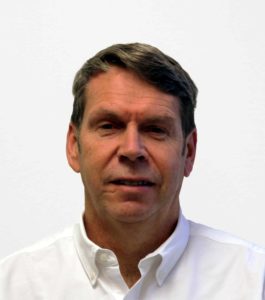On Raima Database Manager. Q&A with Steinar Sande
Q1. What are the typical use cases for the Raima Database Manager ™?
Sande: Raima is a company that helps clients to automate and gather intelligence and information from the edge. To give a few examples on what we mean with the edge, it could be remote software solutions controlling machinery on a plant floor, or any other asset that provides data in a location far from the cloud infrastructure (in response time). The data from these remote sites has the potential to generate gigabytes of valuable data to businesses. However, it is often too far away from a cloud solution or has an internet connection that is on and off. It could also be too expensive or too insecure to transmit the data to the cloud for time-critical operations.
A few use case examples could be autonomous cars collecting data from sensors within the car and collecting map car data from the surroundings of the car while driving. Some of the data is only relevant when the car is in the area and will not need the data after it has left the circle where the data was needed. For this use case, it is needed to have a solution like the Raima database that is safe, secure, reliable, and responds within milliseconds.
Another use case could be Boeing airplanes flying thirty thousand feet above the ground, collecting important data. RDM is embedded within the Radar electronics system aboard the Boeing AWACS airplane providing airborne surveillance and command & control battle management functions for tactical and air defense forces. RDM is used to manage data collected from the antenna on top of the plane. RDM is gathering radar pulses and other RF input and signal identification information to help identify the signals of enemy craft and/or other potential concerns in the area.
The last use case could be oil drilling subsea where there is collected gigabytes of important data. Aker Solutions embeds the Raima RDM database to control the subsea production system and handle high volumes of information gathered from subsea sensors and instruments. The system needs a performant and robust database to ensure data integrity in the offshore environment.
The overall requirements from our clients are that the data on the edge needs to be safe, secure, reliable, recoverable, and respond within milliseconds. Raima enables our clients to take quicker decision by gathering data and provide smarter information to the users that will need it.
Q2. What are the biggest challenges your clients are experiencing?
Sande: The biggest challenges our clients are experiencing is getting the right information in a timely fashion to their end users of their applications. Some challenges they are up against are the different forms of latency that can occur. Hardware and software providers may cause some during the journey from gathering the information on the edge to making sure that information is provided to the users on-premise and/or the users in the cloud. Using a real-time database like Raima will help minimize the latency.
Q3. Is it really possible to get rid of the latency?
Sande: I would like to say we could get rid of all the latency. However, you cannot get rid of it all because there will always be some latency. What Raima can help with, is to optimize on the solution to make sure our clients have in their software stack a well-optimized solution that will meet the security and performance requirements. Without using Raima, that means a lot of refactoring of the software for our clients. Raima is coming in with pre-optimized software, which is already tuned to a lot of user scenario out there on the edge.
Q4. Do you offer different solutions for different industries, or is it one solution and it can be adapted to the various domains?
Sande: Raima is delivering our solution to many verticals. The problem is the same within the different industries. For the different industries, edge computing is a new paradigm that brings decentralized computing power as close as possible to the origin point of the data. In edge computing, the networking architecture is built in a way that helps close the distance between connected devices and the cloud. For instance, we cannot have full SQL servers running on the edge. SQL Server and similar enterprise databases will be too slow and have too large of a footprint. We are in many meetings where we discuss the specific requirements for the edge software solution, and we experience every time that our clients are looking for nimbler software with faster response within a resource constrained environment. In those use cases our clients do not need all the bells and whistles of a full enterprise level database engine. Raima Database Manager is lightweight secure and amazingly fast.
Q5. How do you support your clients?
Sande: The main support done from Raima is online support. Our one-day response time support is done online combined with screen shares if needed to help the clients through any obstacles they may experience. If we have important projects that need special attention to meet deadlines, we will send engineers onsite to sit down with client’s engineers to work through the challenges and to meet the deadlines. However, 70% to 80% is done from our online support team.
Steinar Sande, Chief Executive Officer, Raima
Steinar Sande has worldwide experience with sales of products to enterprice clients. Sande also holds extensive experience in engineering and P&L responsibility for AR/AP, software industry and Internet of Things . That includes Database technology, edge computing, Industrial Internet Of Things and challenges around edge computing.
Related Post
– Database and subsea offshore control technologies. Q&A with Miguel Valero ODBMS.org , 13 MAY, 2019
